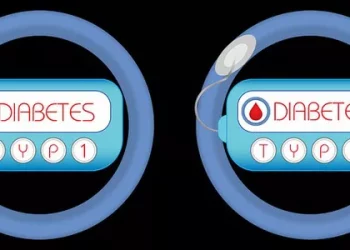Insulin is a life-saving medication, but its effectiveness relies on safe handling and administration, especially as the complexity of Type 2 diabetes management continues to evolve in 2025. Insulin Safety Week serves as an important reminder for healthcare professionals to reinforce best practices, reduce medication errors, and protect patient health. This observance highlights the critical need for patient education, safe insulin use, and leveraging new technology to optimize diabetes care.
As insulin therapy evolves with advancements such as smart insulin pens, digital glucose monitoring, and insulin tracking tools, new opportunities emerge, as do potential risks. This article discusses how healthcare providers can celebrate Insulin Safety Week by promoting insulin safety through education, proper administration techniques, and the use of innovative tools to minimize errors and optimize outcomes.
Why Insulin Safety Matters in 2025
Insulin remains one of the most critical medications, yet it is also among the leading causes of preventable adverse drug events. Errors in insulin use—such as incorrect dosages, improper timing, or mixing up insulin types—are common in both hospital and outpatient settings. The Institute for Safe Medication Practices (ISMP) has identified insulin as a high-alert medication that requires additional safeguards.
The growing complexity of diabetes care—due to the use of newer insulin formulations, biosimilars, and digital titration tools—further underscores the need for careful management. Missteps in prescribing, storage, or switching formulations can have serious clinical implications. This makes Insulin Safety Week a critical moment for healthcare systems to focus on reducing errors through increased awareness and improved patient education.
New Guidelines and Tools for Insulin Safety
Recent updates from the American Diabetes Association (ADA) and the American Association of Clinical Endocrinologists (AACE) have placed greater emphasis on safe insulin prescribing and patient education. For example, the ADA’s 2025 Standards of Care recommend annual insulin safety reviews, the use of structured teaching checklists, and documenting patient understanding before making dosage adjustments.
Technology has also played a key role in enhancing insulin safety. Smart insulin pens such as Medtronic’s InPen and NovoPen Echo Plus log dose data, provide reminders for missed injections, and sync with continuous glucose monitoring (CGM) apps, reducing the risk of dosage confusion and improving adherence. Furthermore, platforms like Glooko and One Drop enable patients to track their blood glucose, insulin use, and carb intake in real-time, allowing for better-informed decisions and helping to prevent dangerous glucose fluctuations.
Common Pitfalls and How to Avoid Them
Despite available tools and education, insulin safety issues persist. Several common pitfalls can undermine safety, but these can be mitigated through awareness and vigilance:
Confusing Similar-Sounding Insulins
Mix-ups between insulins like Lantus and Humalog or Levemir and NovoLog can lead to dangerous glucose excursions. Using color-coded packaging and implementing electronic alerts can help reduce these errors.
Poor Injection Technique
Injecting insulin into lipohypertrophic tissue reduces absorption and effectiveness. Providers should regularly inspect injection sites and reinforce proper technique and rotation.
Incorrect Storage
Insulin must be stored between 36°F and 46°F. Incorrect storage, such as leaving pens in hot cars or freezing them, can render the medication ineffective. Educating patients on proper storage—especially during travel or seasonal changes—is critical.
Nonadherence Due to Fear or Stigma
Fear of injections or the stigma associated with insulin therapy can lead to missed doses. Encouraging the use of user-friendly insulin pens and discreet injection devices can help improve adherence.
Insufficient Follow-up After Insulin Initiation
Structured follow-up is essential during the first few weeks of insulin therapy to prevent hyperglycemia or hypoglycemia. Remote monitoring or regular in-person check-ins can support successful insulin initiation.
How to Promote Insulin Safety in Clinical Practice
Insulin Safety Week presents a valuable opportunity to engage healthcare teams in reinforcing insulin safety protocols and reviewing patient education strategies:
Host Safety Training Sessions
Organize discussions based on real-world case studies of insulin errors and how to avoid them. Encourage staff to share experiences and solutions.
Audit Insulin Prescriptions
Ensure that all insulin prescriptions are complete, specifying the type, dose, timing, and method of administration. Avoid vague instructions like “use as directed.”
Empower Patients Through Education
Provide printed guides, visual charts, and video tutorials on insulin administration. Use teach-back techniques to confirm understanding.
Collaborate with Pharmacists
Pharmacists can identify discrepancies in insulin prescriptions or refills and help prevent look-alike medication errors. Utilize their expertise to reinforce safe insulin practices.
Leverage Digital Tools
Incorporate smart insulin pens and mobile apps to help patients track their insulin use and glucose levels, providing real-time data to support better care decisions.
By treating insulin safety as a shared responsibility among the entire care team, clinicians can ensure that insulin therapy remains effective and safe for all patients.
Related topics:
Which Melon Is Best for Diabetics?
GLP-1 Drugs Show Promise in Preventing Obesity-Related Cancers
Sharp Rise in Childhood Diabetes Cases Highlights Urgent Need for Better Healthcare Access
























